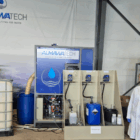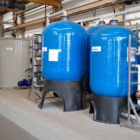Wastewater treatment plants are technical facilities that are used to collect, transport, treat and return treated wastewater from households, industry and commerce to the environment. The aim of these systems is to remove pollutants and impurities before the wastewater is discharged into bodies of water or the sewer system. They are an essential part of modern wastewater management and contribute significantly to the protection of the environment and human health.
Table of contents
Technical background and functionality
A wastewater treatment plant consists of several coordinated stages, which can vary depending on the requirements and type of wastewater. Essentially, we differentiate between municipal wastewater plants and industrial wastewater plants, which are designed for special pollutant loads.
1. mechanical cleaning:
This process step involves the removal of coarse and finer solids from the wastewater. Typical mechanical plant components are screens, sieves and grit chambers. In sedimentation tanks, heavier particles settle to the bottom, while lighter components are separated or removed via grease separators. This mechanical pre-treatment is necessary in order to provide the subsequent biological and chemical treatment stages with as constant an inflow load as possible and to prevent mechanical damage.
An important part of mechanical cleaning are also membrane processes such as microfiltration and ultrafiltration. Here, the wastewater is passed through fine-pored membranes that retain very small particles, bacteria and viruses. Membrane processes are often used in combination with other purification stages, particularly in wastewater reuse and in industrial wastewater treatment, where high purity requirements apply. They offer the advantage that even the smallest suspended particles and microorganisms are efficiently removed without the need for chemicals.
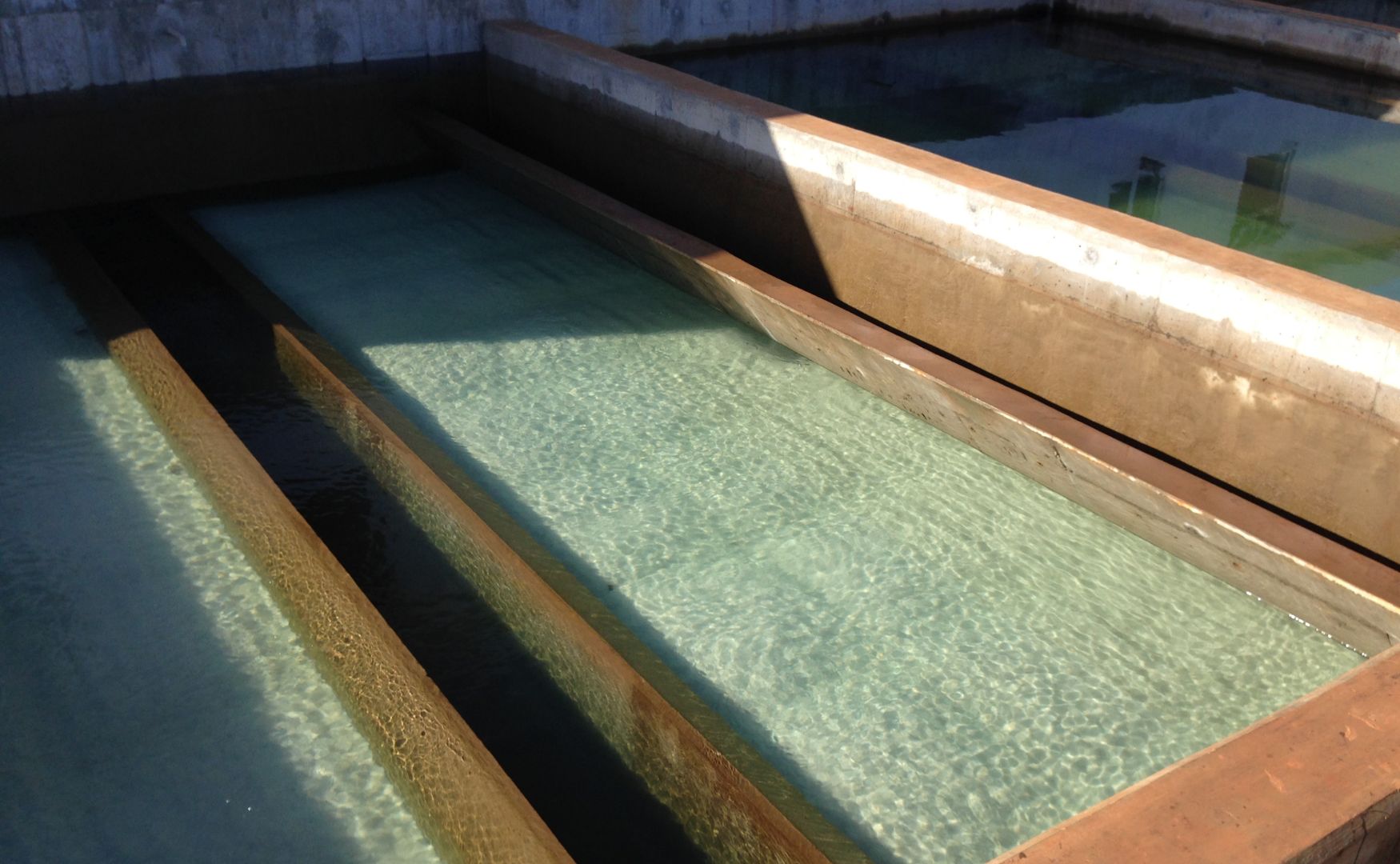
Photo: Example of a mechanical wastewater treatment plant: A filtration plant for water flows of up to 1,000 m³/h in concrete construction(ALMA BHU SMF/MMF)
2. biological cleaning:
In this step, organic impurities are broken down with the help of microorganisms. Aeration plants(biofiltration plants, membrane bioreactors) play a central role here. These plants use microorganisms that break down organic substances and convert them into biomass, carbon dioxide and water. The effectiveness of aerobic biological purification is determined by the oxygen supply in the aeration tanks which favors the aerobic degradation of the substances. A special form of biological purification is denitrification, in which nitrate is broken down to nitrogen under anaerobic conditions.
Another important aspect of biological wastewater treatment are biogas plants (anaerobic plants)which are often associated with sewage sludge treatment. Biogas plants use the anaerobic decomposition of organic matter in wastewater and sewage sludge to produce biogas - a mixture of methane and carbon dioxide. This process takes place in the absence of oxygen and is known as digestion. The biogas can be used to generate energy, which can make the wastewater treatment plant energy self-sufficient. The remaining solid residue, known as digested sludge, must then be dewatered and disposed of or recycled. Biogas plants are particularly widespread in large municipal wastewater treatment plants and contribute to sustainable energy generation.
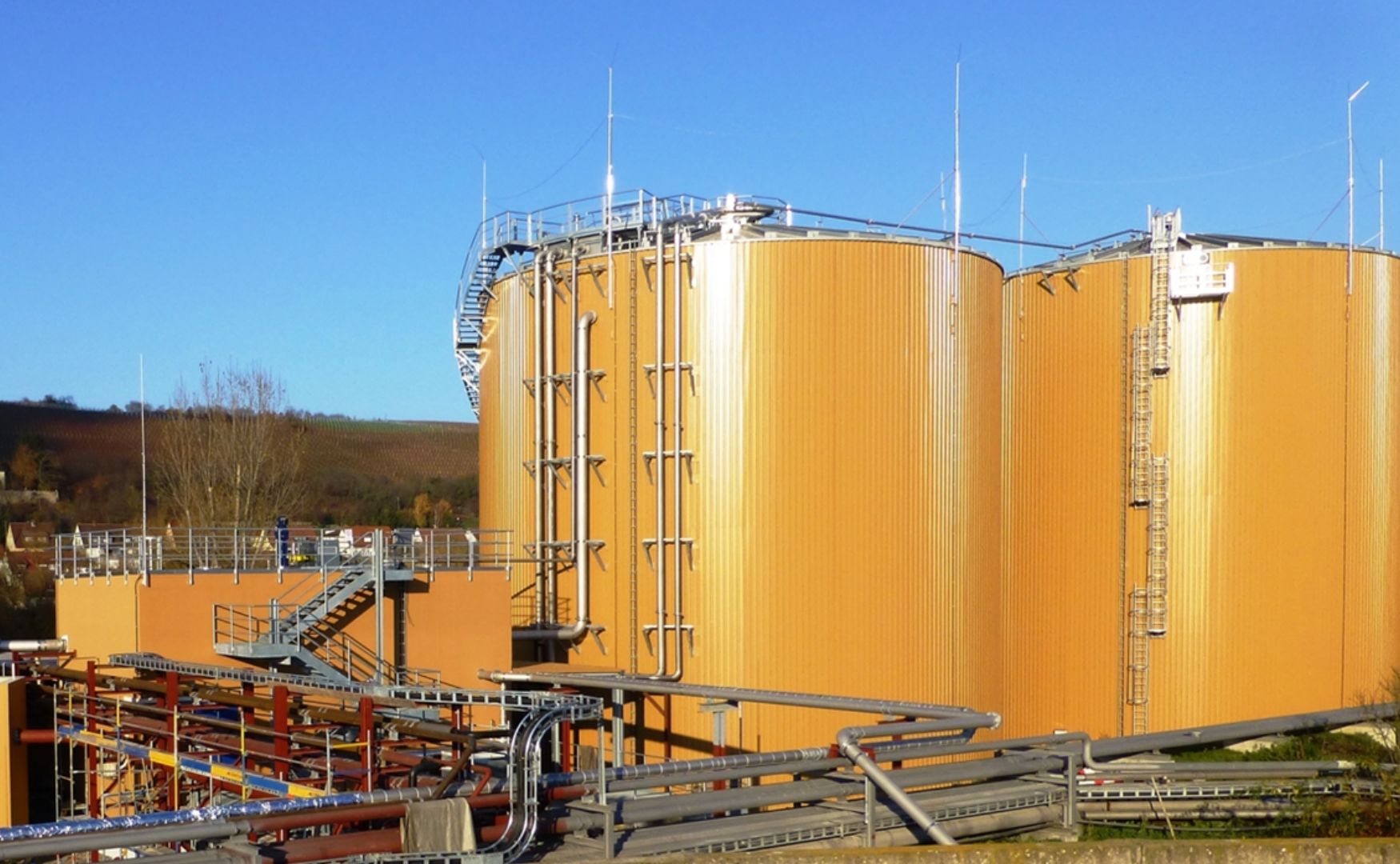
Photo: Example of an anaerobic biological wastewater treatment plant for the production of biogas(ALMA BHU GMR)
3. chemical-physical cleaning:
This step includes processes such as precipitation in so-called CP plants and flotation. Chemical precipitants, such as iron or aluminum salts, are added to convert dissolved substances (especially phosphates or heavy metals) into insoluble compounds, which then settle as sludge. In flotation, finely dispersed air is introduced, which drives particles and fats to the surface, where they are skimmed off. These processes are often used in industrial wastewater treatment plants to remove specific pollutants such as heavy metals or toxic compounds.
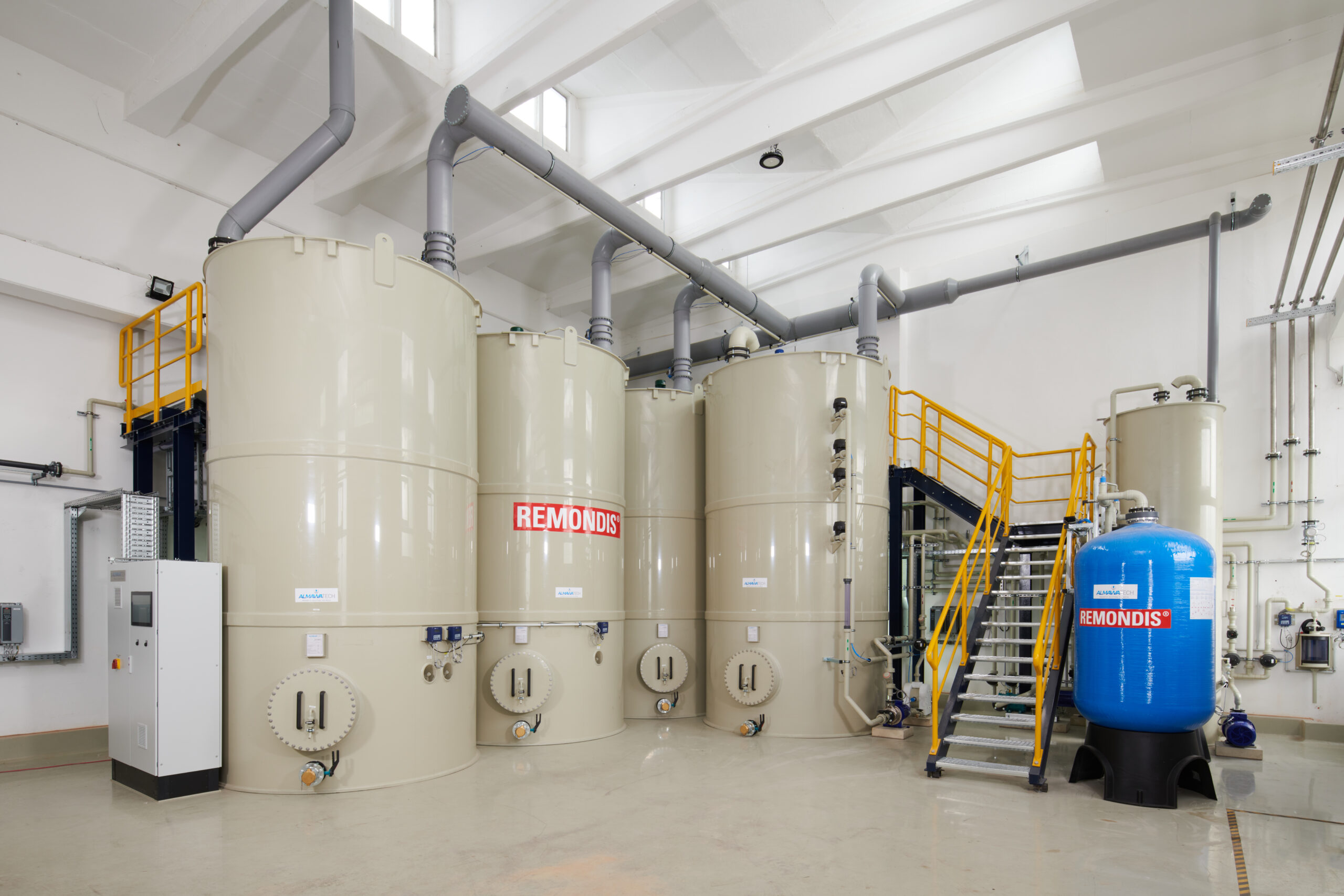
Photo: Example of a CP system for the removal of heavy metals, AOX and hydrocarbons(ALMA CHEM MCW)
Types of wastewater systems and application examples
Municipal wastewater treatment plants:
These plants are designed for the treatment of wastewater from households and municipalities. As a rule, they go through the aforementioned steps of mechanical, biological and chemical treatment. One example is a classic three-stage municipal wastewater treatment plant, which is designed to treat wastewater from small towns to large cities. This structure is often supplemented by a four-stage treatment process in which micropollutants such as pharmaceutical residues or hormone residues are removed using activated carbon or ozone.Industrial wastewater systems:
These systems are specially designed for the treatment of industrial wastewater, which is often highly contaminated. Here are plants for neutralizationemulsion splitting and flotation are used to treat aggressive chemicals, heavy metals and organic pollutants. One example is a chemical-physical plant for the treatment of waste water from the electroplating industry, where heavy metals and acids are neutralized and filtered.Combined plants:
Combined plants are often used in smaller municipalities or special industrial parks. Here, municipal and industrial wastewater are treated together. Such plants must be flexible enough to cope with different pollutant loads. One example is a membrane bioreactor plant (MBR)which combines biological and physical purification processes to enable high purification performance with limited space requirements.
Conclusion
Wastewater treatment plants are technically complex systems that are individually designed depending on the type of wastewater and the legal requirements. They combine mechanical, biological, chemical and physical treatment processes to efficiently remove pollutants from wastewater. The use of membrane processes and biogas plants also helps to save energy and increase efficiency. The expansion and optimization of these plants make a decisive contribution to protecting the environment and complying with legal requirements.
For further information on our products, please feel free to contact us at any time!


